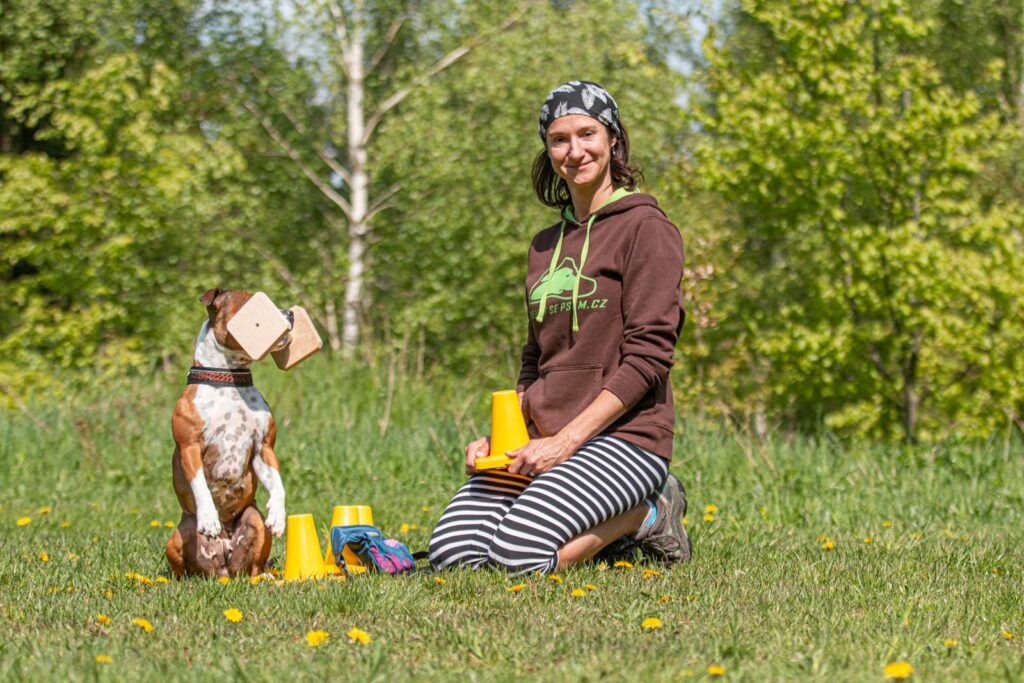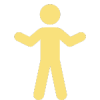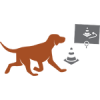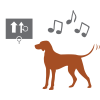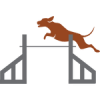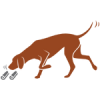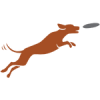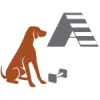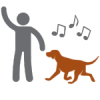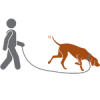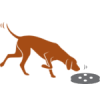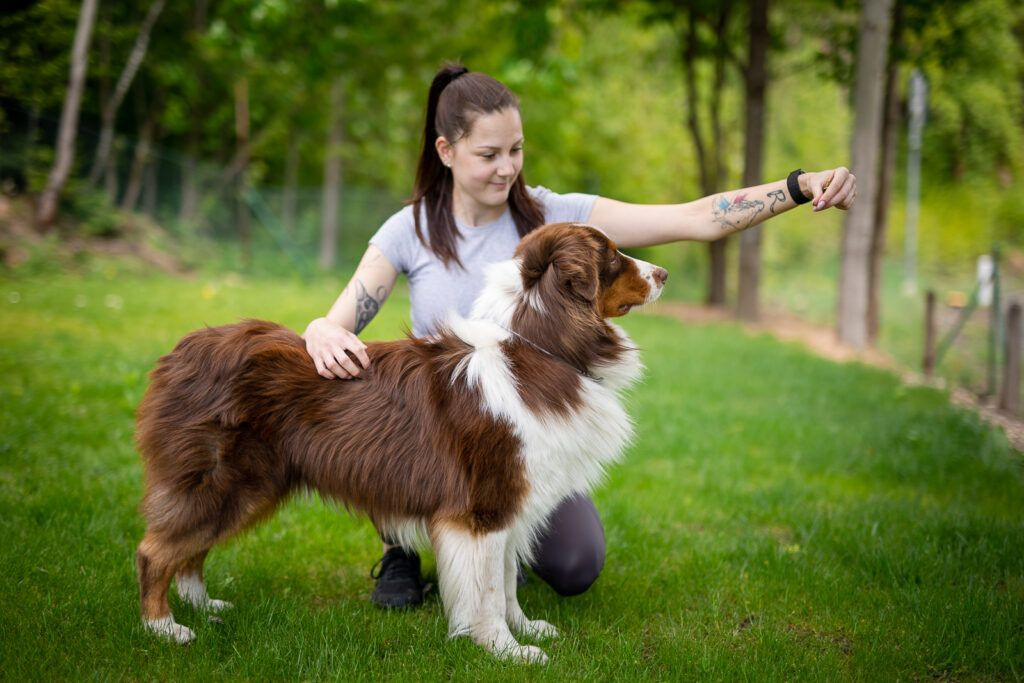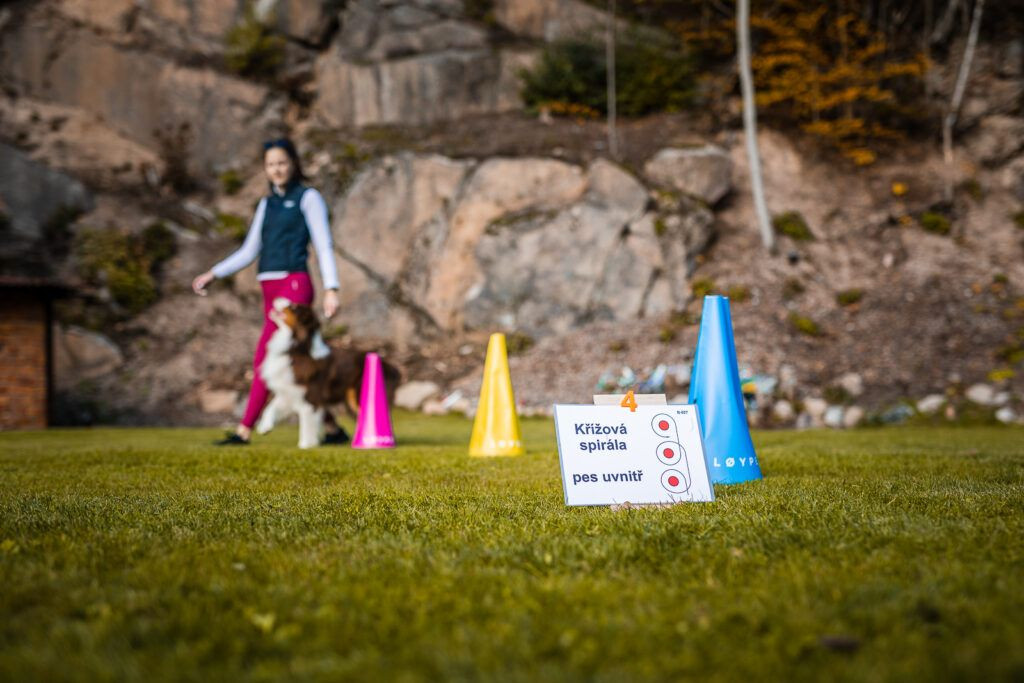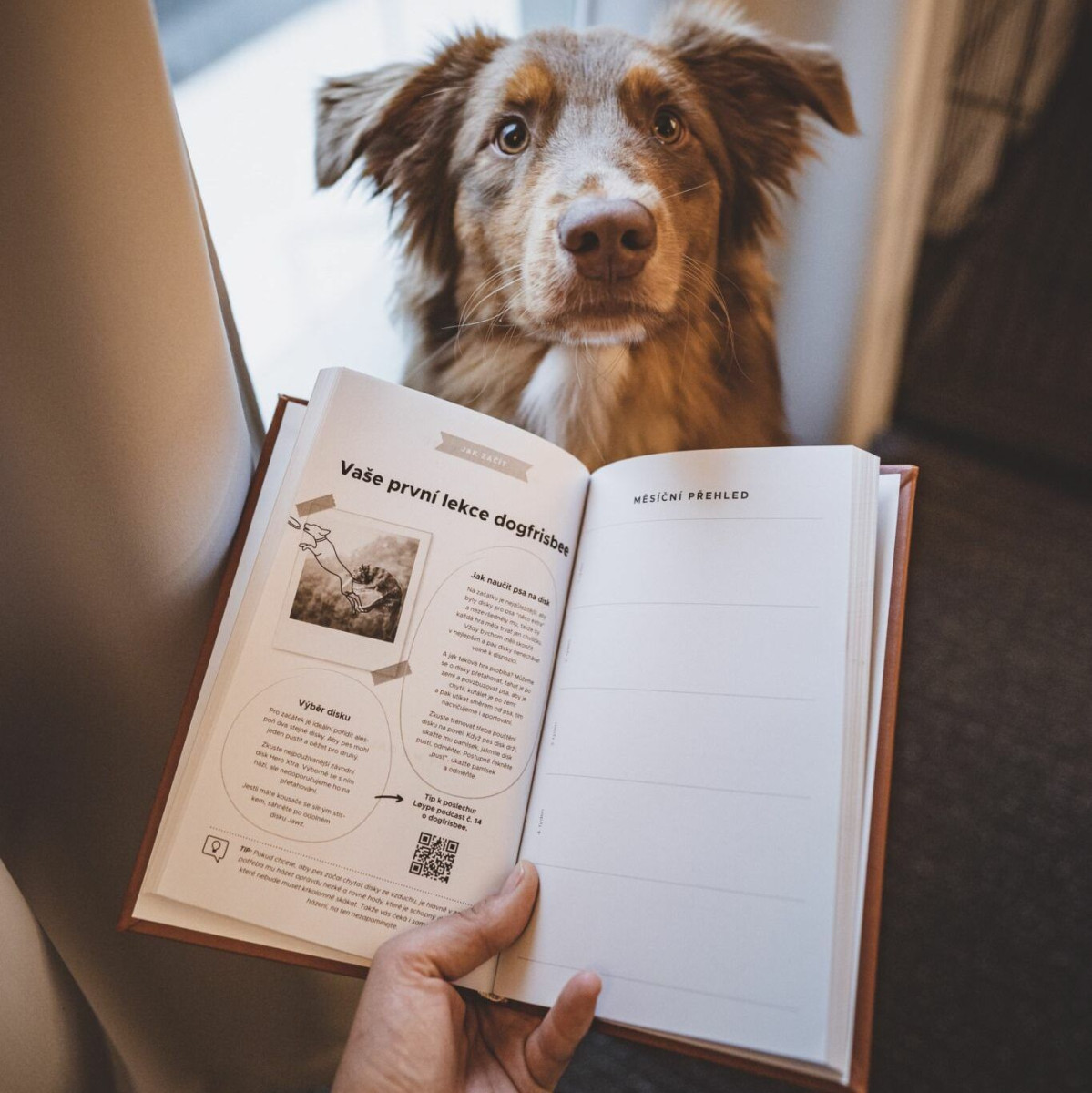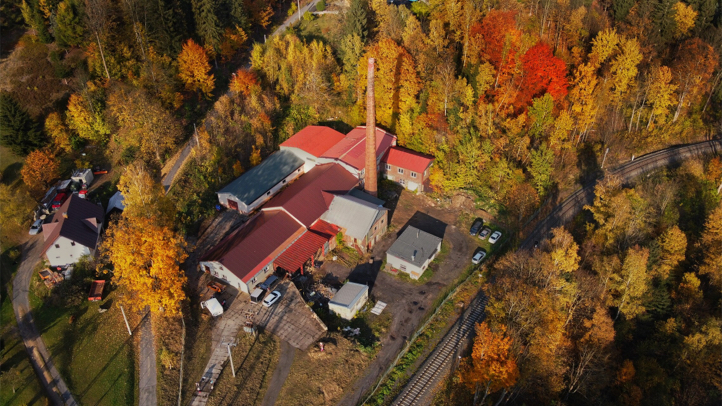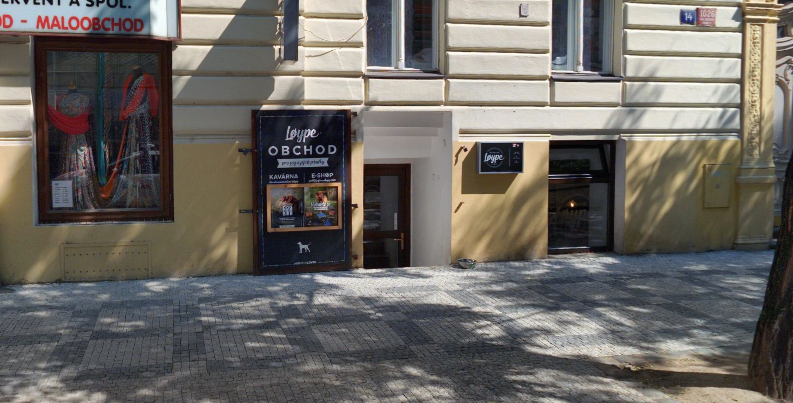What is dog sport called OBEDIENCE?
Obedience (OB) is human-dog discipline. You can train home, at your training place as well as doing it at top-level. You will observe how the dog can concentrate and listen with ears.
The beauty of obedience is to see how even the most hyped dog can really concentrate. You will observe how the dog thinks about the given task, learns how to really listen to the words you are saying and fullfilling the commands. We enjoy the progress the dog makes and you celebrate together. The joy from mutual cooperation is the key in obedience. The official definition says that stress is put on positive relationship between the human and the dog. The relationship should make overall good impression. We have prepared some basic information with our ambassador Kristýna Másílková.
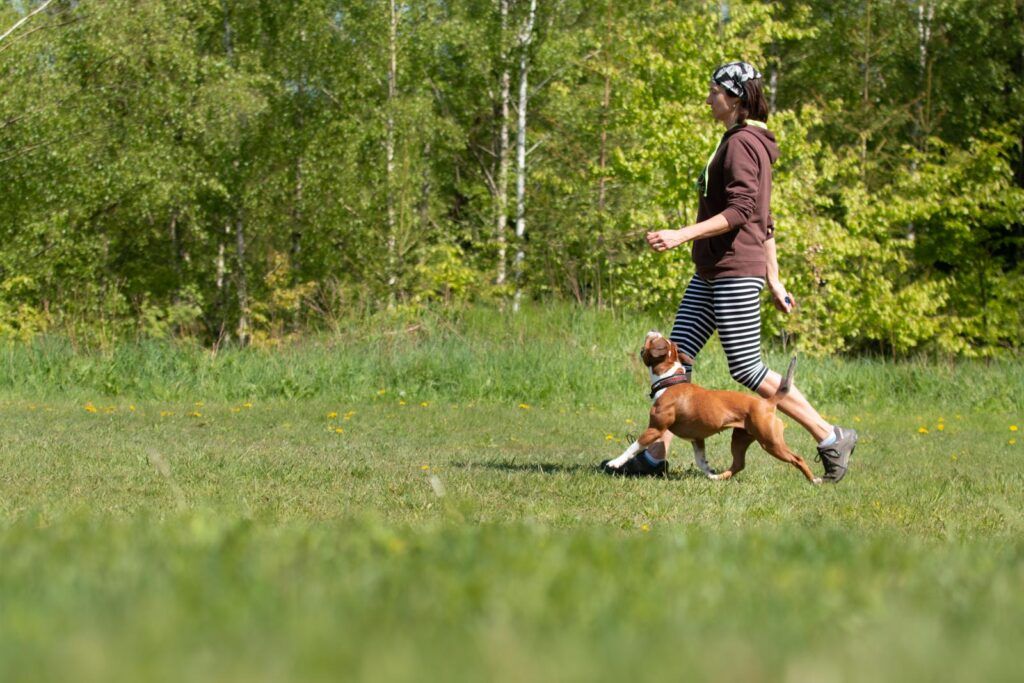
Obedience does not give you a obedient dog
A lot of principles from OB can be used at home or outside at walks etc., but going once a week to a training place for obedience class does not mean your dog will come to recall automatically. It sounds so obvious, but you would be suprised how many dog owners are amazed that their dog does not listen eventhough they visit obedience classes. Obedience in regular life is something a bit different and it also mirrors the relationship between you and the dog as well as your consistency.
From now on we will speak about the obedience as a sport.
Main principles of obedience
The dog needs to think with head and listen with ears, what does it mean? It means that you don't need to look at the dog or even point with your hands. The dog awaits a command - one word that tells him what to do - run around a cone, jump over an obstacle or fetch the dumbbell. The dog really needs to listen, not to wait for situation command.
- Situation command - For example, you open the back door of your car and tell your dog "out" and the dog jumps out. You think how nicely you taught the command "out". But if you would tell the command "out" in any other surroundings, the dog would not have any idea what to do. The behavior is connected to specific situation.
- Command - Here the dog knows the word and know exactly what to do when given it. You would say "go" to the dog when going out from the door. The dog waits for the command and do not run into the streets. If you would tell him to lay down, he would do so. It has nothing to do with the situation, the dog knows what the command means.
We are not saying that the situation commands are wrong. On the contrary! Sometimes they can be very useful. But it is not desired behavior in obedience.

Crashing the stereotypes
And how does the dog learn it all, you may ask? To hear one word and connect it with given behavior? It is basically taught in the opposite way. For example you place a cone in front of a dog and you guide him around the cone using a treat. You add a command to this behavior. And once you place a cone in front of the dog and tell him the command, the dog will go around it. But if you place in front of the dog cone and a dumbbell, the dog needs to wait for the command what to do, that's the time when the reward comes. It sounds easy right? This training might take even years, with talented dog, human and intensive training you can take it down to months.
What does obedience consist of?
So to make it absolutely clear, obedience has some fundamental categories of exercises.
- Distance control - you are sending the dog away from you, usually to marked square, around a cone, in higher class towards some base or even to somewhere unknown (directly straight)
- Stand or sit down under march - you leave the dog at place and you continue walking
- Retrive - dog needs to hold or retrieve a special obedience dumbbell
- Jump - dog jumps over an obstacle that is not higher than its height at the withers
- Positions - sit, lie down, stand - human stands in front of the dog (in higher classes even 15m away), the dogs must stay at place and show off the positions (this is the only time you can show the commands with your hands, because the dog might not heard in such a distance, especially outside)
- Recall - dog runs towards the human (in higher classes must do different positions through the way)
- Sniff - between identical sticks dog must find the one that the human was holding before
- Heelwork - dog has to follow the human without leash next to a leg in different speeds (in higher classes the dog is also required to walk backwards)
- Group exercise - few dogs are sitting or liying down next to each other in 3m range (in higher classes the humans are hidden)
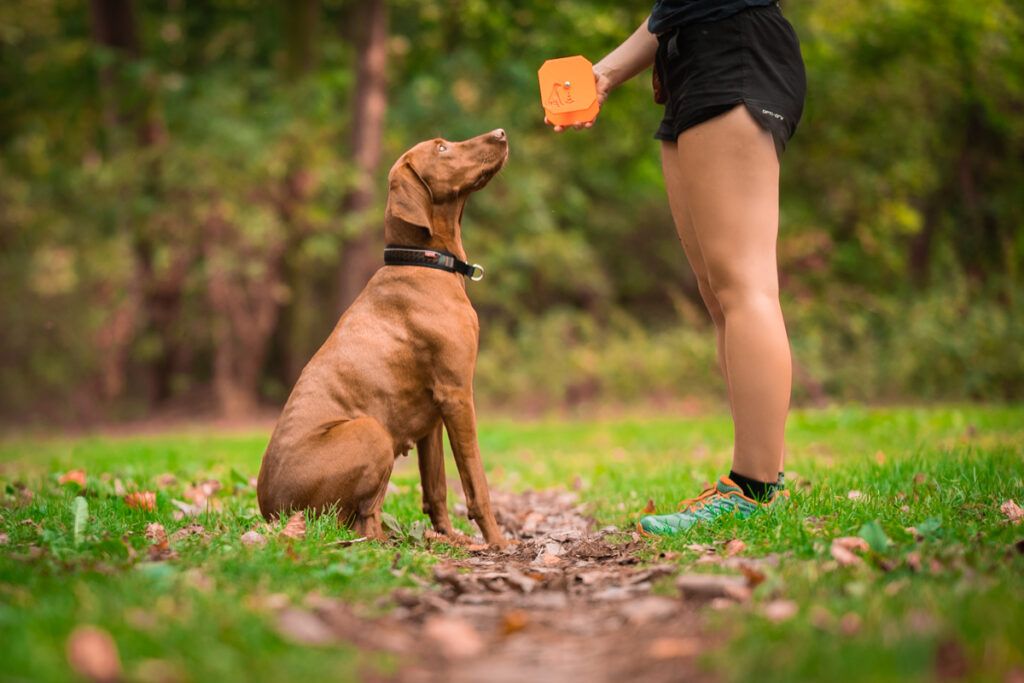
The whole exam takes 10-15mins, the dog is not rewarded during, referee, steward and helpers are present at the same place. Caution! It is not given routine, the referee is deciding when and how the exercises are done.
What does the training look like
The training should primarily bring joy to the dog as well as to the human. You will enforce positive methods, clicker will be handy.
Step by step - sometimes you show the dog the final result of the exercise and only work on details. In other times you work on the exercise through different tools like targets or you will use shaping. Like any other sport each dog has its own pace, so never compare your progress with others and just enjoy time spent together.
How often should you train? Once a week will not be enough, but if you find just few minutes per day to practise, you will see the progress quickly. But that is no rule, you really do not need to train every day, it is just another form of entertainment for the dog when you are not feeling like going for a walk etc.
Human as the main problem
If you ever tried any dog sport, you will know that the dog learns eveyrthing quite quickly, but it is the human who usually makes mistakes, stress about it or just think too much. And obedience is no exception, you need to work on yourself so the training will be enjoyable for both.

Do I have to attend competitions?
No, you can do this sport just for fun. If you decide you want to give a competition a try..when is the right time to go? First of all, you and the dog must be ready (and the dog must be at least 10 months old). You can go after a year or two of training, or even only after few months but it is unnecessary to go unprepared. You want your dog to be successful and if something would go really wrong, you could discourage him for the future. So listen to your instincts and especially to your trainer.
Or you do not need to go anywhere, you can train at home or at training facility and be happy you found another common activity.
